10 groundbreaking Filipino Americans in US history
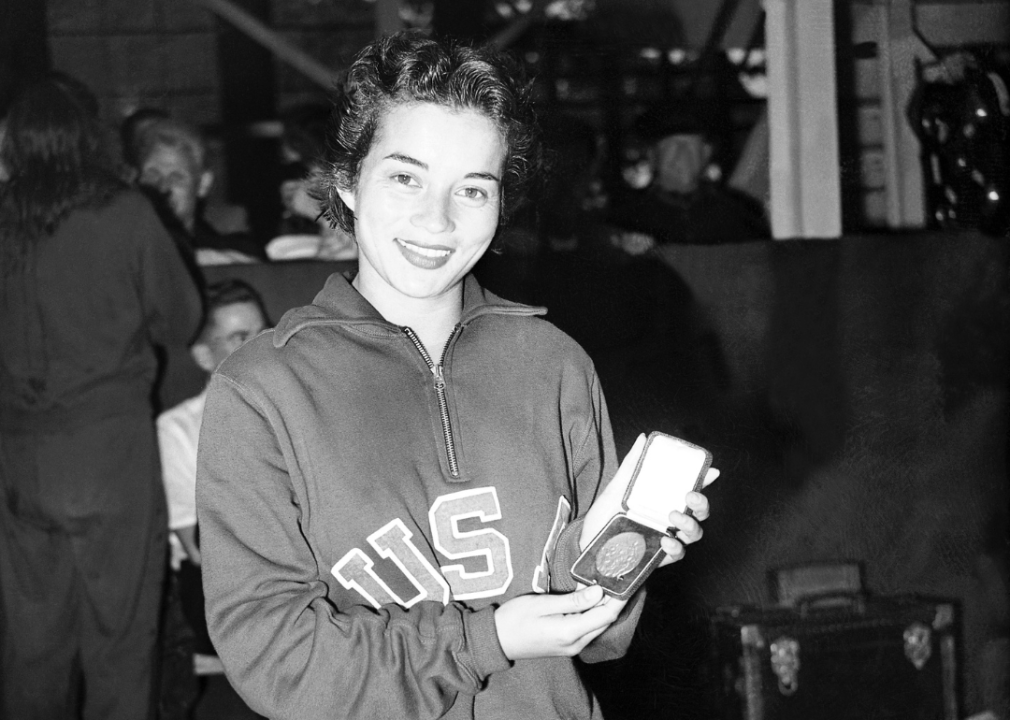
S&G/PA Images via Getty Images
10 groundbreaking Filipino Americans in US history
Vicky Draves shows off her gold medal at the 1948 Olympic games in London.
Filipino Americans are the third-largest Asian American ethnic group in the United States, after Chinese Americans and Indian Americans—and they have had a long history in the United States. The first Filipino Americans to arrive in the United States were sailors aboard a Spanish galleon who landed in present-day Morro Bay, California, on Oct. 18, 1587.
According to the 2020 U.S. Census, 4.4 million Filipino Americans live in the United States, with a high concentration in such states as California, Hawaii, Texas, New York, and Illinois.
Since their arrival, there have been multiple waves of Filipinos migrating to the United States. First, when the United States annexed the Philippines as the 20th century began, many Filipinos migrated to work in agriculture. Second, World War II brought in Filipino recruits, as well as American soldiers who returned home with Filipino wives. Others were professionals who sought further education in the United States and ultimately stayed.
An influx of migration from the Philippines also took place in the 1960s following the passage of the 1965 Immigration and Nationality Act, which eliminated the national-origin quotas that gave preference to people from Western Europe while excluding Asians entirely.
Filipino Americans have made significant contributions to the United States in a variety of fields, including business, science, medicine, the arts, and the military during the nation’s formative eras. During World War II, over 260,000 Filipinos (then U.S. nationals) fought in the war on behalf of the United States. It was only in 2017—more than 70 years later—that their efforts and sacrifices were recognized with a Congressional Gold Medal.
Despite their long history in the United States, the visibility and importance of Filipino American history—as well as their ongoing contributions to the country—has often paled in comparison to other Asian American ethnic groups.
To help shed light on their role in shaping this nation, Stacker spotlighted 10 Filipino Americans who have made significant contributions to U.S. history, using sources from around the web.
![]()
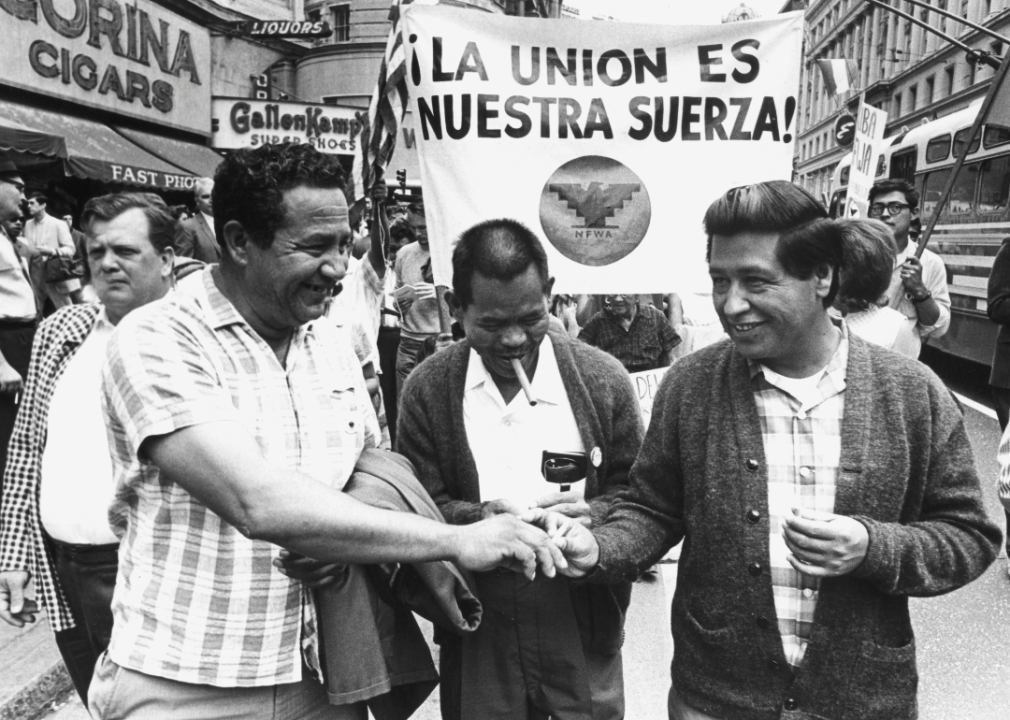
Gerald French // Getty Images
Larry Itliong
Larry Itliong marches with Cesar Chavez and Julio Hernandez in the Huelga Day March in San Francisco, 1966.
While Cesar Chavez is often associated with the farmworker movement in the 1960s, it was a Filipino American labor leader who led the walkout that marked the beginning of the Delano Grape Strikes. On Sept. 8, 1965, Larry Itliong led a demonstration with more than 2,000 Filipino farmworkers to demand better wages and working conditions for agricultural laborers. Itliong’s accomplishments and labor rights advocacy highlighted the commonality of labor struggles across ethnic lines.
Itliong’s story has mostly been forgotten in the past decades. It was only when historian Dawn Mabalon and writer Gayle Romasanta published the first book about him in 2018 that his name once again rose to the surface. Itliong is now remembered as one of the most important labor leaders in American history—one who fought for migrant workers during the Civil Rights Movement. In 2015, former California Gov. Jerry Brown signed a bill designating Oct. 25 as Larry Itliong Day.
[Pictured: Larry Itliong (center) marches with Julio Hernandez and Cesar Chavez in the Huelga Day March in San Francisco, 1966.]
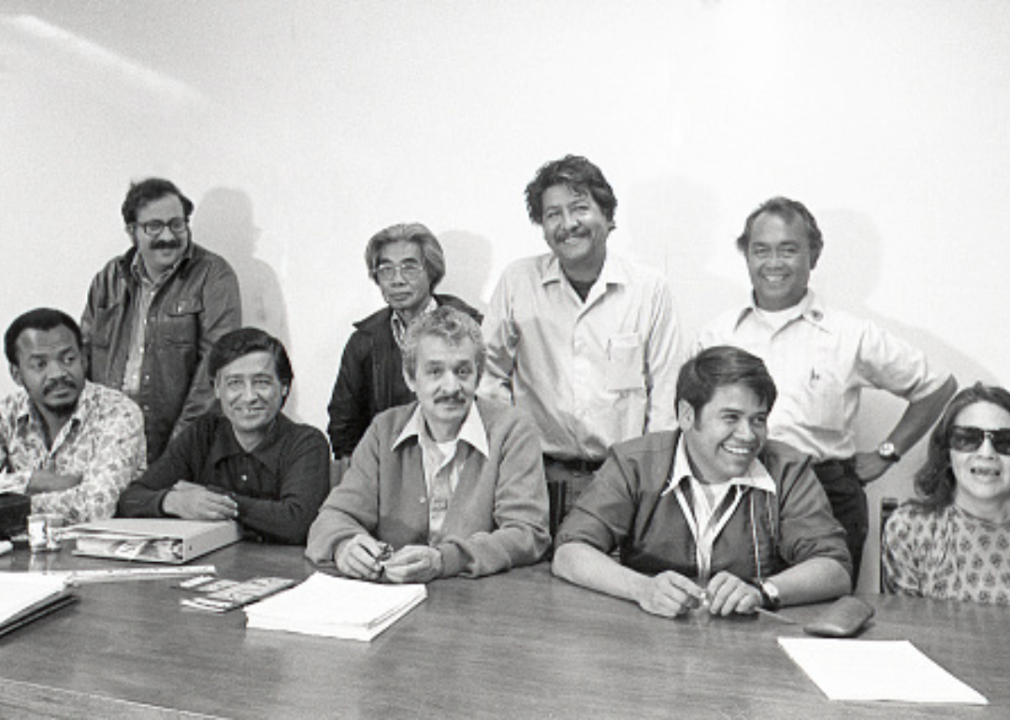
Cathy Murphy/Getty Images
Philip Vera Cruz
Philip Vera Cruz poses with Dolores Huerta and the National Executive Board of the United Farm Workers Group.
When Philip Vera Cruz immigrated to the United States from the Philippines in the 1920s, his goal was to eventually return to the Philippines and help his family. He ended up becoming an important labor leader who made significant contributions to the American labor movement.
Vera Cruz helped organize and support boycotts during the farmworker movement, including the Delano Grape Strike and Boycott, to pressure growers to recognize the union and improve labor conditions.
By the mid-1960s Vera Cruz joined the Agricultural Workers Organizing Committee—a union comprising mostly Filipino farmworkers—which later joined forces with the National Farm Workers Association to create the United Farm Workers, where he served as its second vice president.
Vera Cruz’s efforts contributed to the passage of the California Agricultural Labor Relations Act in 1975, which gave farmworkers the right to unionize and bargain collectively. This in turn led to better pay and working conditions.
His contributions to the farmworker movement were recognized with the Ninoy M. Aquino Award in 1987 and honors from the AFL-CIO’s Asian Pacific American Labor Alliance’s founding convention.
[Pictured: Philip Vera Cruz (back row, 2nd from left) with the National Executive Board of the United Farm Workers Group.]
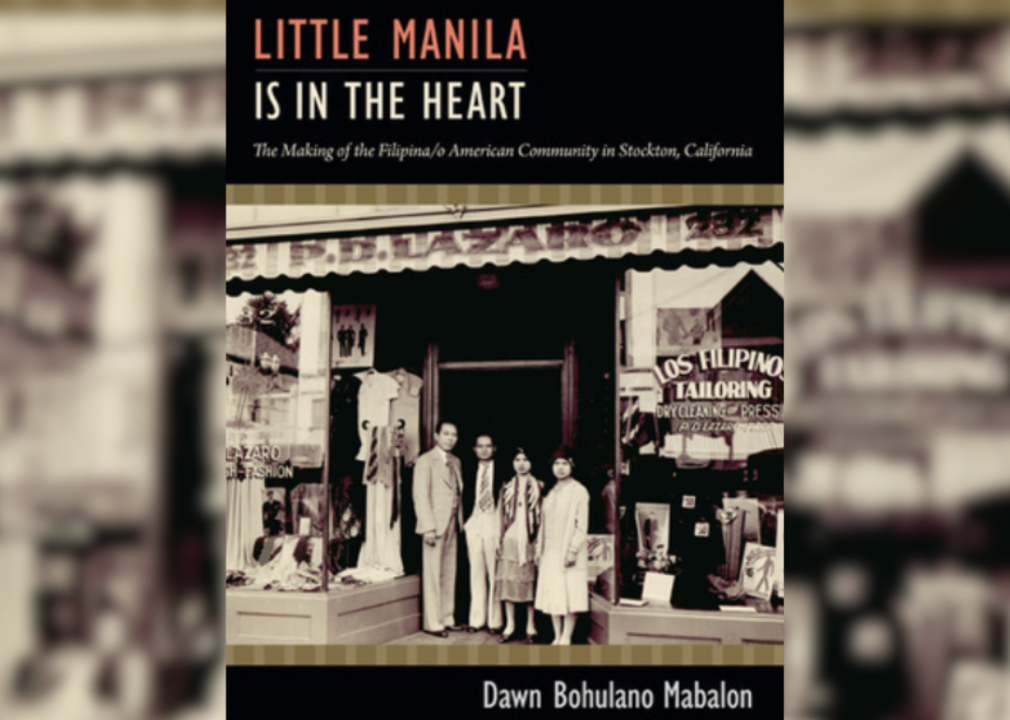
Duke University Press Books
Dawn Bohulano Mabalon
The book cover of “Little Manila is in the Heart: The Making of the Filipina/o American Community in Stockton, California.”
Dawn Bohulano Mabalon was a Filipino American historian, writer, poet, and educator, whose work explored Filipino American identity, culture, and the Filipino diaspora experience. Mabalon’s work helped raise awareness of the contributions of Filipino Americans to the United States, which have often been overlooked and marginalized in traditional historical narratives.
Mabalon is believed to be the first Filipina American to earn a doctorate in American history from Stanford University. Her dissertation became the book “Little Manila is in the Heart: The Making of the Filipina/o American Community in Stockton, California.” Published by Duke University Press, her book brought to light both the contributions of Filipinos to American life as well as the forced segregation of Filipinos within a four-block area in Stockton.
Mabalon also co-founded the Little Manila Foundation (now Little Manila Rising), and was dedicated to preserving and revitalizing the Little Manila historic site in Stockton. Her sudden death in 2018 was a big loss for the Filipino American community. Mabalon and her work continue to be a crucial part of conversations about Filipino Americans.
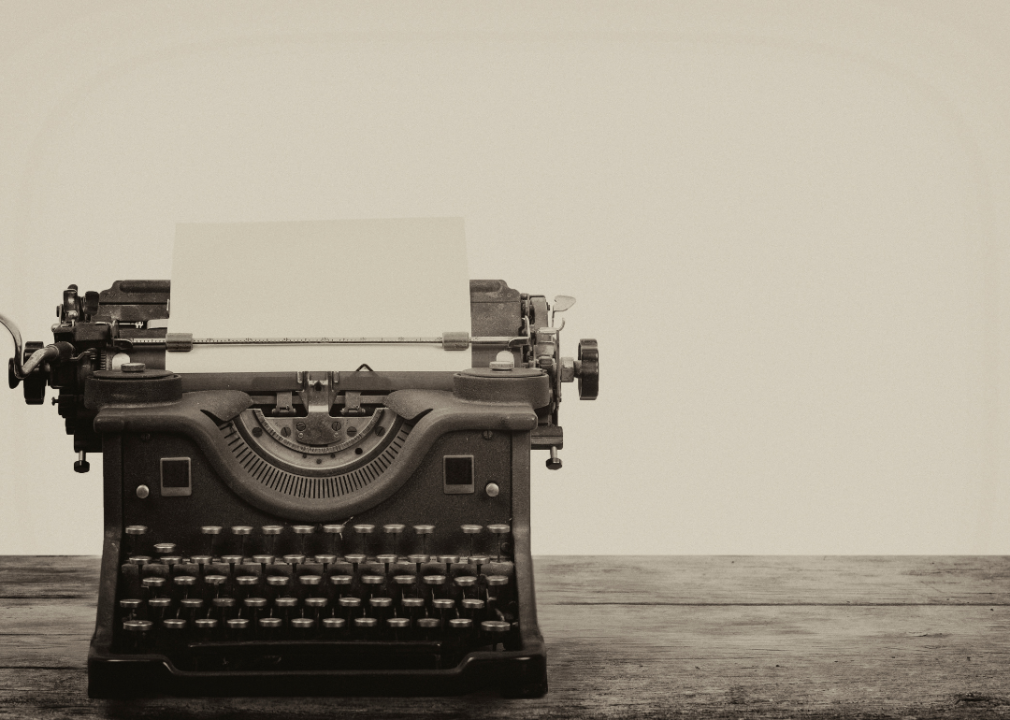
Canva
Fred and Dorothy Cordova
A close up of a typewriter.
Fred and Dorothy Cordova began their involvement in Filipino American activism nearly 70 years ago. The two met as students at Seattle University and eventually published “Bamboo: The Filipino People in American Life.”
In 1957, the couple formed Filipino Youth Activities, which offered leisure activities such as soccer, folk dancing, and parade marching to their own children as well as other youths from diverse backgrounds. With Dorothy writing grants, the organization provided staff that could advise parents on immigration and employment. Dorothy would advocate for hiring bilingual teachers, as well as placing doctors trained in the Philippines in the U.S.
Meanwhile, Fred authored “Filipinos: Forgotten Asian Americans,” which highlighted the often overlooked history of Filipinos in the United States, and taught Filipino American history at the University of Washington.
In the 1980s, the two founded the Filipino American National Historical Society, which has since grown to 41 chapters around the country. The society was instrumental in the official recognition of Filipino American History Month.
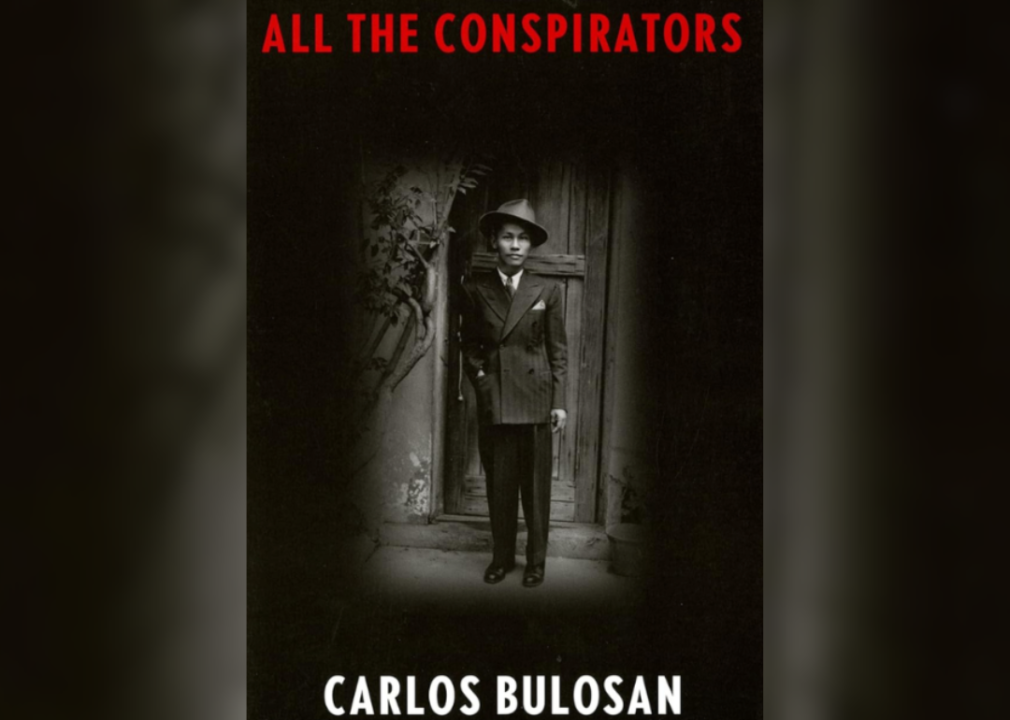
University of Washington Press
Carlos Bulosan
The cover of “All the Conspirators” by Carlos Bulosan.
Carlos Bulosan was a Filipino American writer and labor activist. Bulosan’s most notable work, “America Is in the Heart,” is a semi-autobiographical novel that explores the themes of immigration, identity, and the American Dream through his experiences as a Filipino immigrant in the United States in the early to mid-20th century.
His experiences as a migrant laborer all along the West Coast inspired his writing and activism. He advocated for workers’ rights and social equality. Bulosan’s work remains a significant part of Filipino American literature and an important contribution to American history.
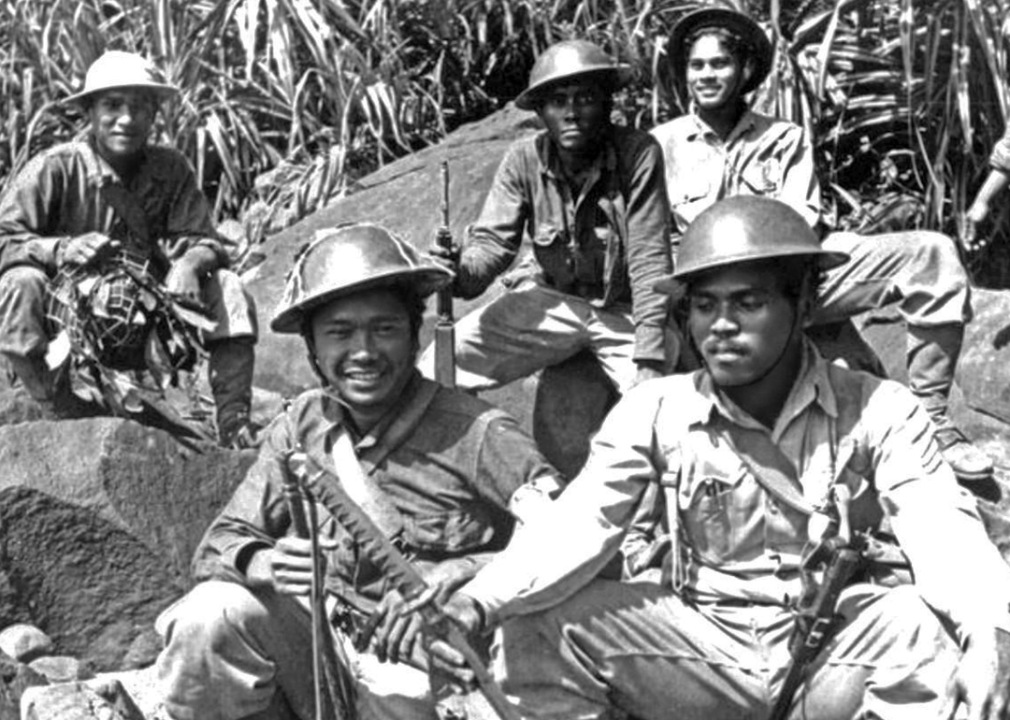
Pictures from History/Universal Images Group via Getty Images
Jose Calugas
Filipino Resistance fighters with captured Japanese weapons during the Battle of Bataan, February 1942.
Jose Calugas was a Filipino American soldier recognized for his heroic actions during World War II. During the Battle of Bataan in 1942, heavy Japanese artillery fire destroyed one of the U.S. Army’s cannons. Calugas, a mess sergeant from another unit, volunteered to run 1,000 yards through the fire to repair the cannon and succeeded with the help of a group of volunteers he organized. The soldiers then used the repaired cannon to fire back at the Japanese, which was crucial in fending off the attack.
In 1945, Calugas was awarded the Medal of Honor, the United States’ highest award for military efforts, for his actions during that battle. Calugas’ legacy is commemorated at the Fort Sill National Historic Landmark & Museum in Oklahoma where his Medal of Honor is displayed, as well as with a relief sculpture at Mount Samat National Shrine in the Philippines.
[Pictured: Filipino Resistance fighters during the Battle of Bataan, February 1942.]
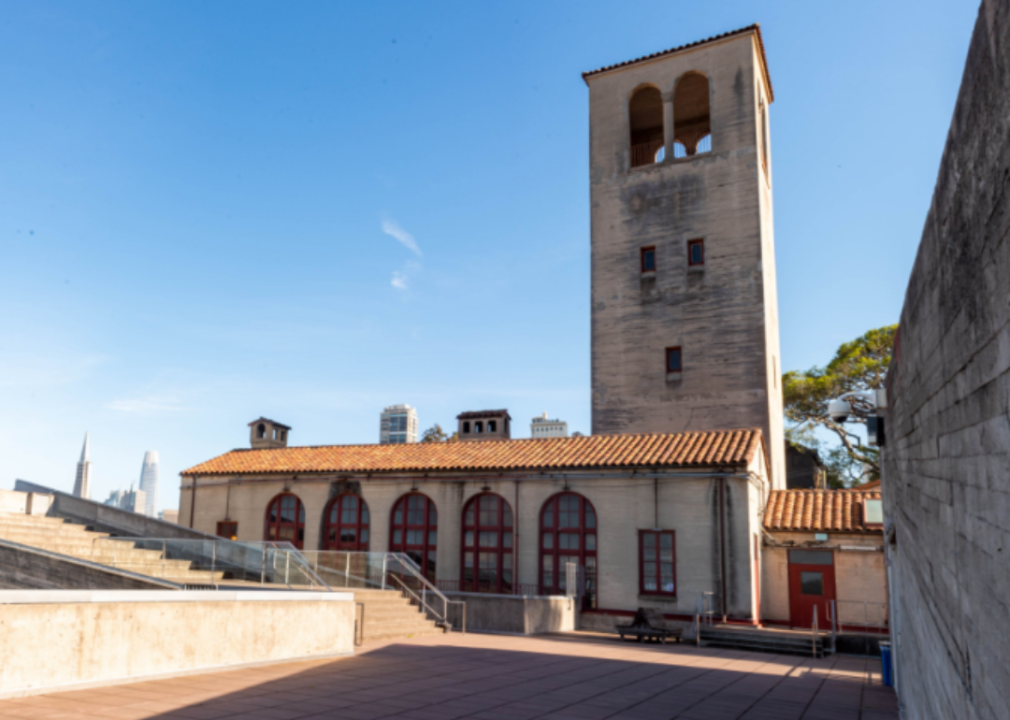
Suzette Leg Anthony // Shutterstock
Carlos Villa
The campus of the San Francisco Art Institute.
Carlos Villa was a Filipino American artist who sought to raise the visibility of artists of color and challenged the mainstream art world’s Eurocentric focus. His work drew from non-Western art and culture; explored themes of Filipino identity, multiculturalism, and decolonization; and helped amplify the voices of marginalized communities.
Villa’s work has been exhibited in museums across the world, including the Whitney Museum in New York City and Asian Art Museum in San Francisco. His work, some of which are reminiscent of shaman’s robes or inspired by Maori tattoos, has been praised by artists, scholars, and critics.
His 2022 retrospective at the Asian Art Museum was the first by a Filipino American artist in a major museum. Villa was a professor at the San Francisco Art Institute for 40 years and inspired a generation of young artists to look beyond the Western canon, teaching the likes of Kehinde Wiley and Barry McGee.
[Pictured: The campus of the San Francisco Art Institute.]
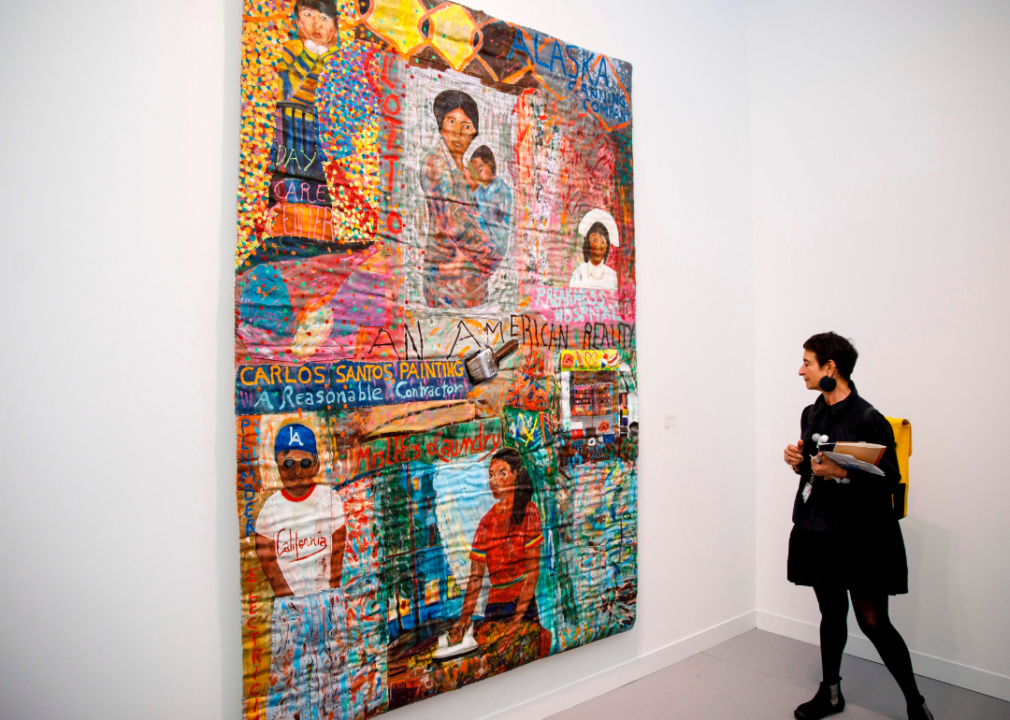
TOLGA AKMEN/AFP via Getty Images)
Pacita Abad
A woman views an artwork titled ‘I thought the streets were paved with gold’ by Pacita Abad at the Frieze Art Fair in London.
Pacita Abad was a Filipino American artist whose 32-year career in art often conveyed themes including identity, culture, and social issues. “Social Realist,” a series of works from the 1970s, depicted individuals fleeing political persecution and economic injustice. Her “Immigrant Experience” series tackled issues like colorism and the Haitian refugee crisis.
Abad spent several years living in different parts of the world, including Sudan and Indonesia, and she drew from the cultural traditions and techniques she learned during her travels for her own work. Abad was known for her trapunto technique, in which she stuffed and stitched canvases instead of stretching them over wooden frames. She also created art using a variety of media such as paper and ceramics. The Walker Art Center staged the artist’s first retrospective from April 15 to Sept. 3, 2023.
[Pictured: Pacita Abad’s ‘I thought the streets were paved with gold’ on display at the Frieze Art Fair in London.]
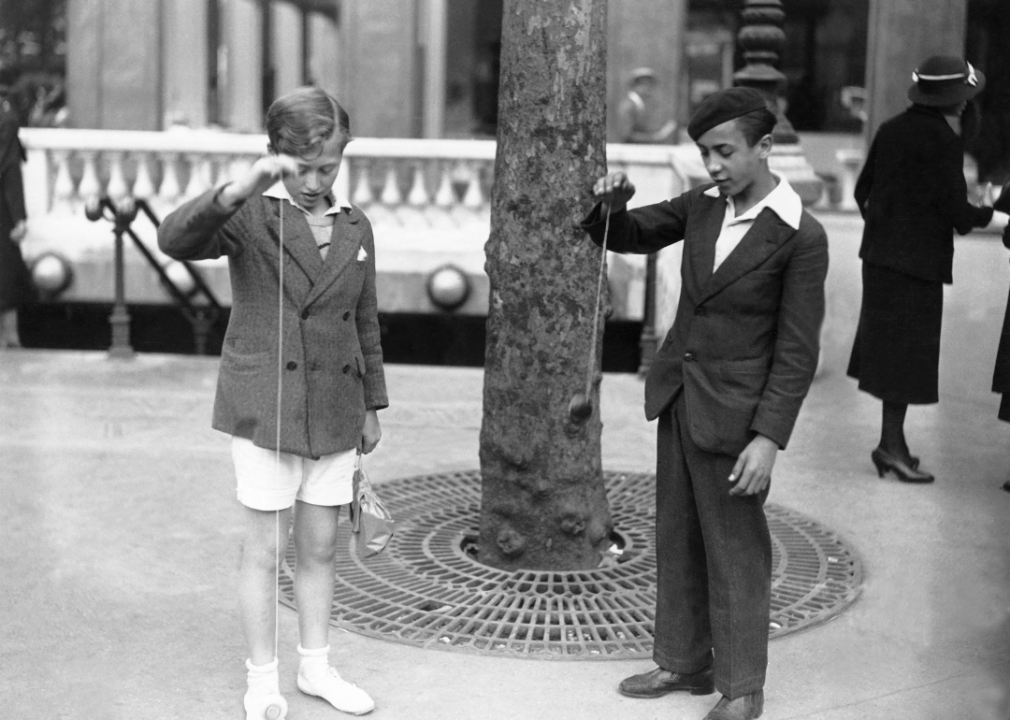
Keystone-France/Gamma-Keystone via Getty Images
Pedro Edralin Flores
Two children playing with yo-yos around 1930.
Pedro Edralin Flores was a Filipino American entrepreneur and inventor who played an important role in popularizing the yo-yo in the United States. The yo-yo has existed for thousands of years, and the earliest known patent for it is dated in 1866, at which point it was called a “whirligig.”
Flores made a key change to that design that made it more versatile; while the toy usually had a string knotted around the axle, Flores modified it to a looped string, allowing it to spin freely and for new tricks to be performed.
By 1929, Flores had trademarked the name “yo-yo,” manufactured yo-yos out of Santa Barbara, California, and promoted the toy through demonstrations and competitions. His modification of the yo-yo and marketing strategy were pivotal in making it a toy that remains popular today.
[Pictured: Two young children playing with yo-yos around 1930.]
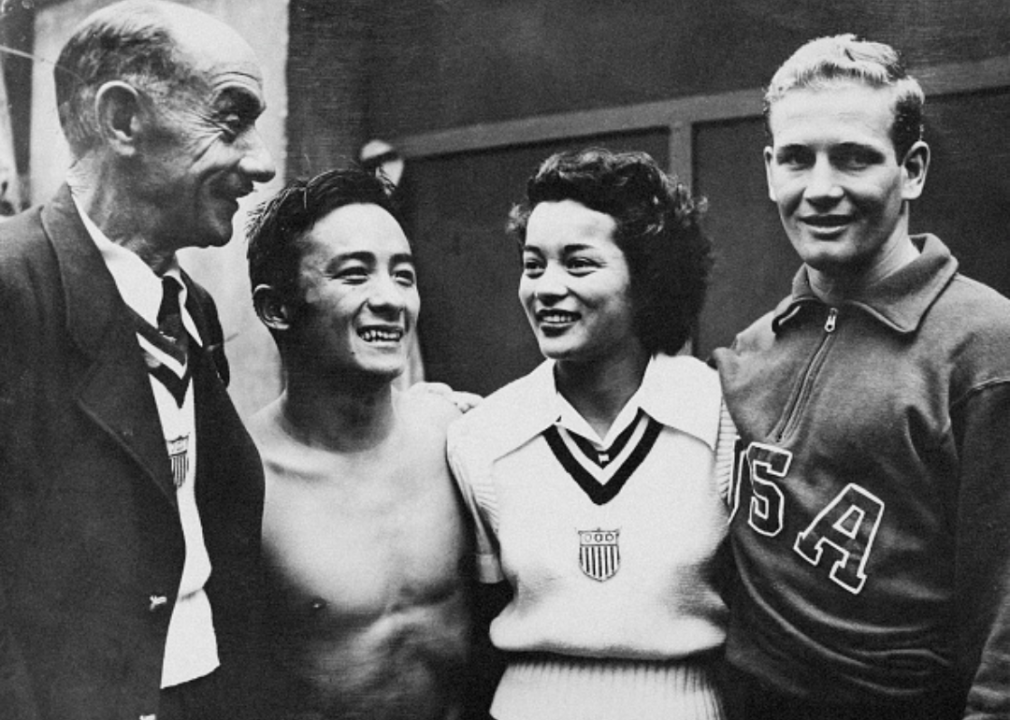
FPG // Getty Images
Vicki Draves
Vicky Draves poses with her coach and two other athletes at the 1948 London Olympics.
Vicki Draves made history at the 1948 London Olympics: She became the first Filipina American and the first Asian American to win an Olympic gold medal. But that accomplishment didn’t come easy.
Draves, born Victoria Manalo to a Filipino father and an English mother, faced racial discrimination at a time when interracial marriages weren’t widely accepted. To even be able to swim in San Francisco, she had to take her mother’s maiden name (Taylor) and hide her Filipino heritage. Despite the prejudice she faced, Draves succeeded at the Olympics, shattering racial and gender barriers.
[Pictured: Vicky Draves with her coach and two other athletes at the 1948 London Olympics.]
Story editing by Carren Jao. Copy editing by Tim Bruns. Photo selection by Ania Antecka.





